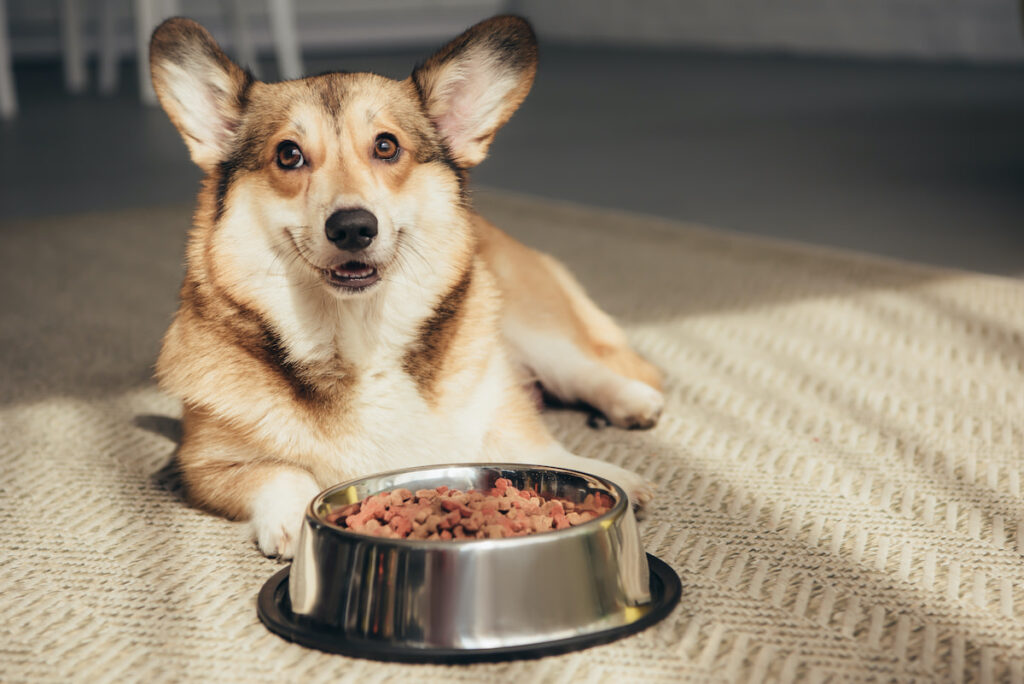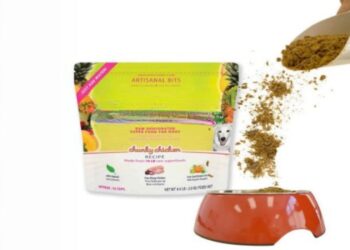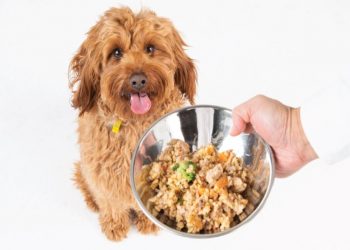Dogs, like humans, require a balanced diet to maintain optimal health and vitality. Central to this balance is the understanding of their caloric needs, which play a crucial role in their overall well-being.
Calculating Daily Caloric Needs
Various factors influence the daily caloric requirements of dogs, making it essential to tailor their diet to meet their individual needs.
Breed Size and Energy Level
Bigger dogs, like Great Danes, naturally burn more calories than smaller breeds like Chihuahuas. Similarly, energetic breeds like Border Collies need more calories than calmer breeds like Bulldogs. Think of it like a car just like a bigger engine needs more fuel to run!
Age and Life Stages
Growing puppies are like little athletes, needing more calories per pound to fuel their development. Adult dogs have settled into a routine, needing a steady amount of calories. Senior dogs are less active and might need fewer calories to avoid weight gain.
Activity Level and Exercise Routine
Just like us, dogs who exercise a lot burn more calories. Think of your dog like a runner – they need more food to replenish the energy they burn during exercise!
Less active dogs, like couch potatoes, might need a smaller amount of calories to maintain a healthy weight.

Recommended Daily Caloric Intake
Recommended Daily Caloric Intake
General Guidelines for Adult Dogs: Many dog food bags have a feeding guide based on your dog’s weight and activity level. This is a good starting point, but remember, it’s a general suggestion. Think of it like a map – it shows you the way, but you might need to adjust for detours!
Reading Suggestion: Do dogs need calcium
Special Considerations for Puppies
Puppies are growing fast, so they need more calories per pound of body weight than adult dogs. Imagine a building under construction – it needs more materials than a finished house! Consult your vet to determine the right amount for your furry friend.
Adjustments for Senior Dogs
As dogs get older, their activity level slows down, and their bodies become more efficient with calories. They might need fewer calories to avoid becoming overweight. Think of it like an old car – it might not need as much gas as a new one to run the same distance. Talk to your vet about adjusting your senior dog’s diet to avoid weight gain.
Signs of Overweight and Underweight Dogs
1. Identifying Obesity in Dogs
Obesity in dogs is a prevalent issue that can lead to various health problems. Recognizing the signs of obesity is essential for addressing this issue promptly.
2. Recognizing Signs of Malnutrition
Malnutrition in dogs can have detrimental effects on their health and well-being. Understanding the signs of malnutrition is crucial for ensuring they receive adequate nutrition.
Balanced Diet for Optimal Caloric Intake
Importance of High-Quality Dog Food
Providing high-quality dog food is essential for meeting their nutritional needs and maintaining optimal health. The ingredients and nutrient composition of dog food play a significant role in their overall well-being.
Understanding Nutritional Labels
Understanding nutritional labels on dog food packaging is essential for selecting the right food for your pet. Paying attention to key nutrients and ingredients can help ensure they receive a balanced diet.
Incorporating Treats and Snacks
Treats and snacks can be a valuable addition to a dog’s diet but should be given in moderation. Incorporating healthy treats into their diet can provide additional nutrients and enrichment.
Factors Affecting Caloric Needs
1. Seasonal Variations and Climate
Seasonal variations and climate can affect a dog’s caloric needs, with extreme temperatures or weather conditions impacting their energy expenditure.
2. Medical Conditions and Medication
Certain medical conditions and medications can influence a dog’s metabolism and caloric requirements. It’s essential to consider these factors when determining their dietary needs.
3. Spaying/Neutering and Its Impact on Metabolism
Spaying or neutering can alter a dog’s metabolism, affecting their caloric needs. Adjustments to their diet may be necessary to prevent weight gain or loss.
Customizing Caloric Intake
Consulting with a Veterinarian
Consulting with a veterinarian is essential for customizing a dog’s caloric intake to meet their individual needs. A veterinarian can provide personalized recommendations based on factors such as age, breed, and health status.
Keeping a Food Diary
Keeping a food diary can help track a dog’s caloric intake and monitor their dietary habits. This information can be valuable for making adjustments to their diet as needed.
Adjusting Portion Sizes Based on Results
Based on the results of monitoring their caloric intake and dietary habits, adjustments can be made to portion sizes to ensure they receive the appropriate amount of calories for their needs.
Conclusion
Ensuring that dogs receive the right amount of calories each day is essential for their health and well-being. By understanding their caloric needs and making adjustments as necessary, pet owners can help their furry companions live happy, healthy lives.
Meeting a dog’s caloric needs is crucial for maintaining their health and vitality. Proper nutrition plays a significant role in supporting their overall well-being and longevity. Providing dogs with proper nutrition is essential for ensuring their health and well-being. By meeting their caloric needs and offering a balanced diet, pet owners can help their dogs thrive for years to come.
Frequently Asked Questions
How many calories should my dog be eating per day?
There’s no single answer, as it depends on several factors:
- Breed size and energy level: Bigger, more active breeds need more calories.
- Age: Growing puppies need more than adult dogs, while seniors might need less.
- Activity level: Working dogs burn more calories and need a higher intake.
Is 600 calories enough for a dog?
Maybe, maybe not. It depends on the dog’s size, age, and activity level. A small, inactive dog might do okay on 600 calories, while a larger, active dog would need much more.
How many calories does a working dog need per day?
Working dogs can require significantly more calories, potentially exceeding 1000 per day. Consult your veterinarian for specific recommendations.
Do calories matter for dogs?
Absolutely! Just like humans, dogs need a balanced diet with the right amount of calories. Too few calories can lead to malnutrition, while too many can cause obesity, impacting their health.
How many calories should a 60 lb dog eat per day?
This depends on the breed and activity level. As a general estimate, a moderately active 60 lb dog might need around 800-1000 calories daily. It’s best to consult a vet or use a calorie calculator for a more accurate estimate.
Is it okay to feed the dog once a day?
While some dogs do well on one meal, splitting it into two meals is generally recommended, especially for larger breeds. This can help with digestion and prevent bloat.
How many calories are in 1 cup of dry dog food?
This varies depending on the brand and formula. Check the label – it should list the calories per cup.
How much food should I feed my dog chart?
Many dog food brands offer feeding charts based on weight and activity level. These can be a helpful starting point, but remember, individual needs may vary.
How much homemade food should I feed my dog chart?
Creating a balanced homemade diet requires more planning. Consult a veterinarian or animal nutritionist for guidance on portion sizes and nutrient requirements based on your dog’s specific needs.










